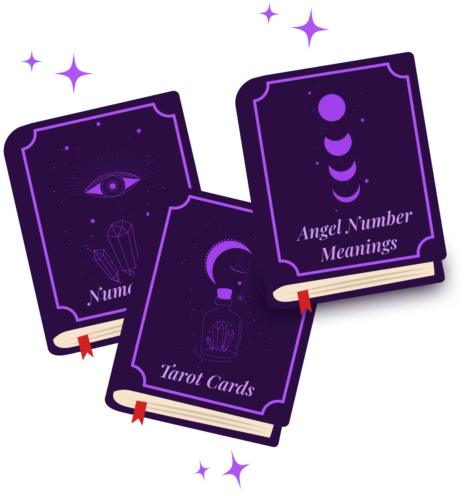While most of us are familiar with at least the idea of meditation, not everyone has heard of ASMR. Short for Autonomous Sensory Meridian Response, it started entering the public arena in around 2010 and it’s grown in popularity ever since. You’ll even find entire YouTube channels, websites, and lifestyle experiences dedicated to it now. Guest writer Tracy at YogaBody, discusses the link between meditation and ASMR and why we should try it in 2022…
What is ASMR?
Short for Autonomous Sensory Meridian Response, ASMR is the term used to describe the pleasurable tingling that certain people feel on their scalps in response to particular sounds. Not everyone has this precise reaction, but even without a physical feeling, relaxation can become easier to accomplish. A 2018 study revealed that ASMR may be able to help listeners reduce their heart rates, improve their attention spans, and enhance their memories. And people suffering from anxiety, chronic pain, and depression can get help treat these disorders this way. It’s easy to see that it is much like meditation, a technique in practice for thousands of years now.
What is Meditation?
“If every 8 year old in the world is taught meditation, we will eliminate violence from the world within one generation.”—The Dalai Lama
Meditation can help to hone attention and focus and connect the mind to the body and breath. It helps certain people process difficult emotional states, and it can even alter consciousness, according to some. With regular practice, you could be able to significantly reduce your stress levels
and improve your immunity.
What Does Science Say about ASMR?
Researchers have been able to prove the existence of ASMR as well as the physiological changes it causes in the body. Experts have noted that heart rates in listeners decrease by as much as 3.14 pulses per minute and a rise in sweat on the palms. There have been numerous studies of mediation and the benefits it offers. These include lowering high blood pressure, better handling of certain psychological disorders, and a decrease in persistent pain.
ASMR and Meditation Together
As per the ASMR Research Project, our bodies’ response to specific types of low-key stimulation can help us control our stress levels. It’s part of our evolutionary development and it’s believed that it’s linked to the way primates calm nervous, upset offspring. You could compare it to the way you would react to a child needing help with a non-life-threatening injury. Adults in this situation hug, kiss, and talk to the infant tenderly. These actions release melatonin and oxytocin, hormones that help both parties relax. Many people mistakenly believe that meditation makes our brains switch over to auto-pilot. In fact, this practice is a method to become even more aware of what’s going on around us. While the details of meditative practices can vary, it requires becoming focused on what’s happening in your mind. You may be counting breaths, paying attention to a specific image or sound, or simply watching your thoughts go by.
ASMR is sometimes defined as the response that certain people have to meditation. Or it may purely be a way to unwind and enjoy a pleasurable physical experience, a way to more easily enter the meditative state of mind. If you’re suffering from tension, feeling upset, or are in physical pain, ASMR could be the gateway to a point of relaxation that allows you to meditate more easily.
The Effect of Sound
Studies have shown that certain sounds can distract us, making it impossible to focus and difficult to learn, while others have the opposite effect. Gentle sounds like white noise can be very relaxing and can even help us filter out those that we want to avoid. A commotion of any kind will draw our attention because of evolutionary patterns. We’re unconsciously trying to determine if we’re under threat, which makes it difficult to do anything else.
The audio that ASMR videos present is frequently simple variants of white noise. This is a random sound with a flat spectral density, meaning that its intensity remains the same throughout the 20 to 20 000 hertz frequency range. If there is speech, this will usually be in the form of short bursts of words followed by more neutral noises like birds tweeting, chimes ringing, or rustling leaves, for example.
Where ASMR and Meditation Don’t Work
If your ASMR video has any type of talk, it may not be the best choice for your meditative practice. You’ll struggle not to focus on the words you hear, and this will keep you out of the state you’re trying to achieve. But white-noise-ASMR is a great choice. The relaxed state it engenders will help you still your mind and enter a state of deep thoughtfulness, calm, and peace. Used in conjunction with calming breathing techniques, it helps you leave the stress of daily life behind and allows you to focus inward.
The Benefits of ASMR and Meditation
Research conducted in 2018 noted that people viewing ASMR videos reported that they were able to relax and unwind more easily and get to sleep quicker. Other results included feelings of comfort, decreasing anxiety and general pain levels, and general feelings of well-being. A regular meditation practice can help you develop awareness, cultivate joy, and overcome feelings of anger, fear, and grief. Tibetan Meditation Master and Harvard scholar Dr Trungram Gyalwa has additionally noted that compassion can be actively nurtured this way, and that you may find yourself
viewing life as a whole more positively
The combined effects of ASMR and meditation can be much more than just a fleeting tingling on the scalp and a momentary quieting of the mind. Using these practices together can offer enormous benefits for your mind as the calm, happiness, joy, peace, and relaxation you experience in these
states overflow into your everyday life.
Making sure you’re feeling good mentally can vastly improve every aspect of your being. You may find that you are not feeling as stressed as you usually do and could see your relationships improve as a result. You might also find yourself making better choices overall, and the ripple effect of taking better care of yourself can only have a positive outcome.
FAQ
What is meditation?
Meditation is a practice that involves focusing your attention on a particular object, thought, or activity to achieve a state of calm and relaxation.
How are ASMR and meditation related?
Both ASMR and meditation can induce a state of relaxation and calmness, and some people find that combining the two can enhance the effects of both practices.
What are the benefits of combining ASMR and meditation?
Combining ASMR and meditation can help you achieve a deeper state of relaxation, reduce stress and anxiety, and improve your overall well-being.
How can I get started with combining ASMR and meditation?
To get started, find a quiet and comfortable place to sit or lie down, choose an ASMR video or audio that you find relaxing, and focus your attention on the sensations and sounds while practicing your meditation techniques.
















